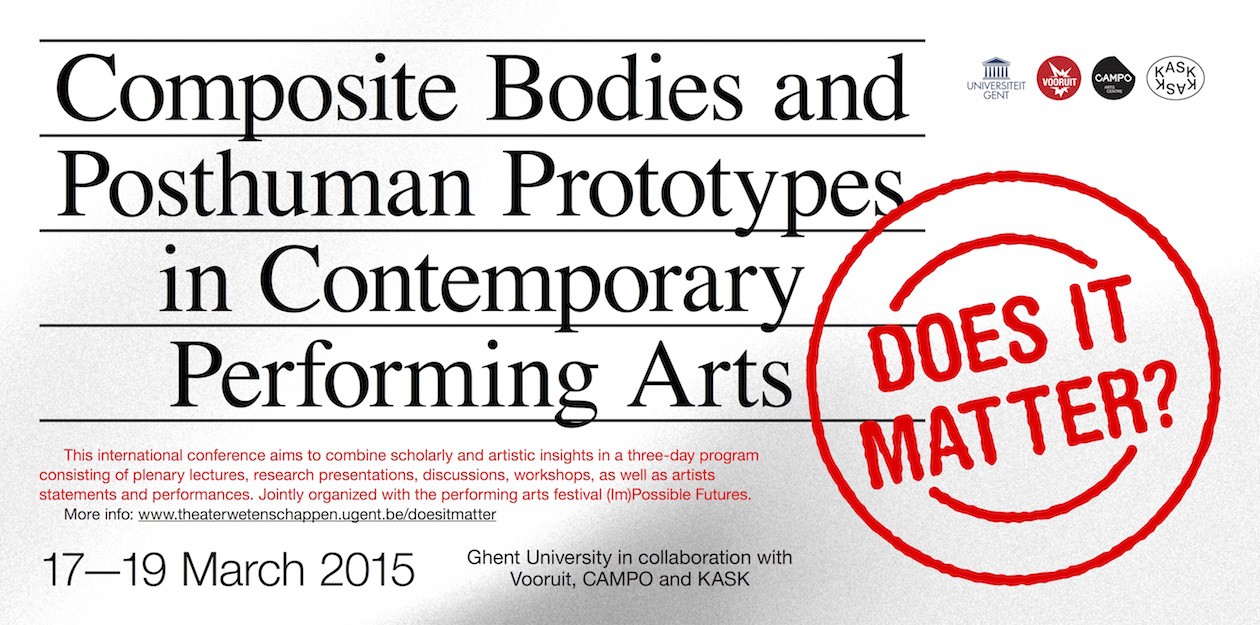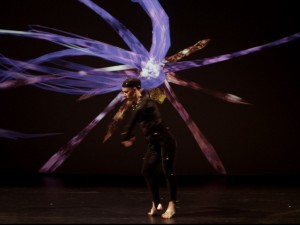Performance by John McCormick and Steph Hutchison
How to reserve a ticket for Emergence at the Does it Matter? conference
Choose the performance you would like to attend:
- Wednesday 18th March, 20h30 – 21h30
- Thursday 19th March, 13h00 – 14h00
- Thursday 19th March, 20h30 – 21h30
For each session a limited number of seats is available (max. 40 audience members for each performance), so please book as soon as possible by send an email to Lana Crois at lana.crois@ugent.be specifying your name and the date and time of the performance you’d like to attend.
Tickets are free, but reservation is required.
Please come to the ticket desk of Vooruit Arts Centre (Sint Pietersnieuwstraat 23) at the indicated starting time. From there you will be guided to the performance venue, the IPEM lab of Ghent University, which is a short walk from Vooruit.
If you don’t have a ticket reservation yet on the day of the performance, please come to the ticket desk of Vooruit 15 minutes in advance of the start of the performance to find out if there are still tickets available.
About Emergence
Emergence is a dance performance created by John McCormick and Steph Hutchison, scholars in the areas of dance, motion capture, agent – dancer performance co-creation, real-time 3D, artificial intelligence, neural networks, performance, choreographic practice and external frameworks. Emergence is the result of McCormick and Hutchison’s collaborations with Motion.Lab and the Centre for Intelligent Systems Research (CISR) at Deakin University, Melbourne, Australia.
John McCormick’s Emergence features collaborations between a human dancer (Hutchison) and an artificially intelligent performing Agent. The Agent has learnt to dance through a rehearsal process with its human dance partner, Hutchison, sharing her movement and style. Visualisations of their interactive semi-improvised dance performance are projected in stereoscopic 3D. Emergence uses a portable motion capture system to allow the agent to sense and recognise the dancer’s movement using its Artificial Neural Network. The agent is able to follow the dancer’s movement, create movement based on the vocabulary it has learnt from the dancer in rehearsal, generate movement phrases using the current movement of the dancer as starting points and can also recognise short full-body movement phrases or “gestures” which prompt the agent to inject verbal commentary on the dancer’s performance.
Emergence uses the framework of distributed cognition to allow the agent and dancer to form an interactive, inter-dependent farelationship from which the co-creation of the performance evolves. The agent is not explicitly programmed with set behaviours, as in traditional software programming, its capabilities come about from the unsupervised learning process and have the inter-dependent relationship with the dancer embedded in that learning. The behaviours emerge from the learning process allowing the agent and dancer to develop a complex, co-created dance performance.
Please note that Emergence and other projects of researchers working at Deakin University Motion.Lab (Melbourne) will also be discussed in the panel ‘Emergence and transformation in digital dance environments’ on Thursday 19 March,16.15-17.15, Domzaal, Vooruit Arts Centre.
For more information on Emergence and its makers:
http://www.johnmccormick.info
http://stephhutchison.wordpress.com
http://www.deakin.edu.au/motionlab

